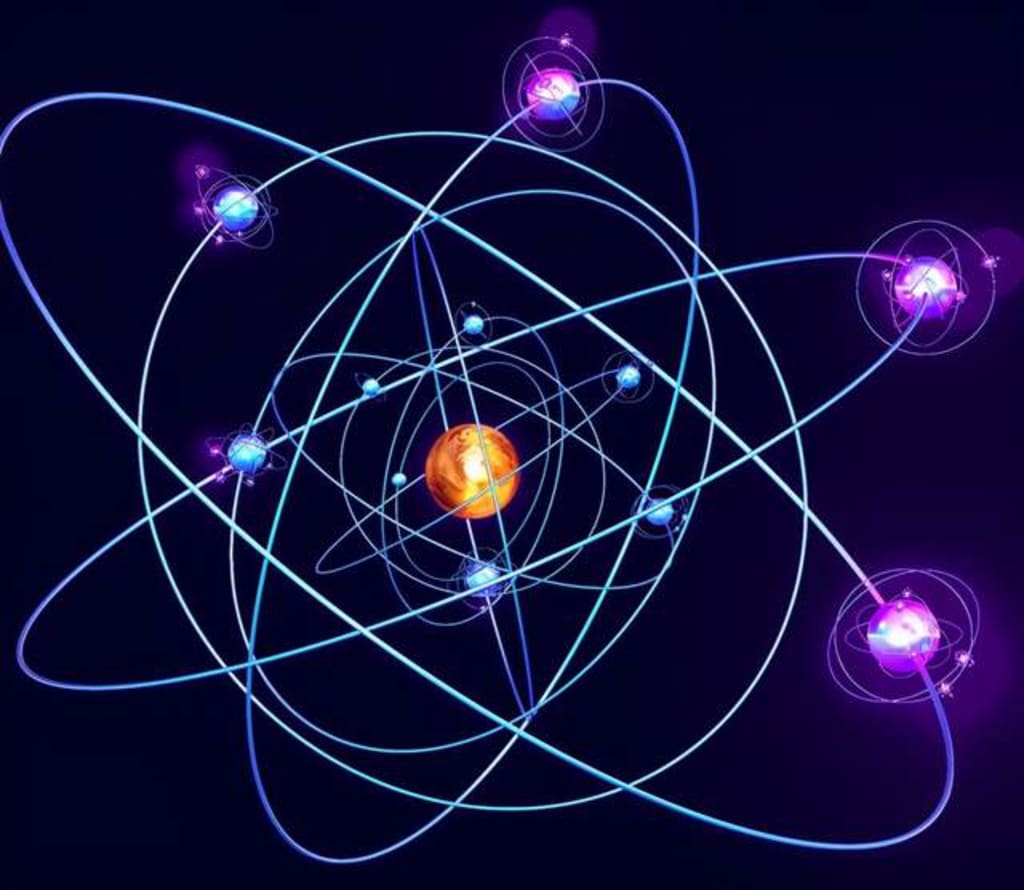How small is the electron? If the Earth shrinks to the size of an electron, how big would the universe be?
How small is the electron? If the Earth shrinks to the size of an electron, how big would the universe be?

In the macroscopic world, the earth moves around the sun, while in the microscopic world, electrons move around the nucleus of an atom. Although the two move in very different ways, we often associate the earth with electrons, so the question arises: If the earth shrinks to the size of an electron, how big would the universe be after shrinking in the same proportion? To answer this question, first, we need to know the size of the electron.
The above picture shows a common model of atomic structure. It seems that the electron is not much smaller than the nucleus, but this scale is wrong.
How small is the electron?
The size of an elementary particle such as an electron cannot be measured by conventional methods, so scientists initially used the method of "throwing" a large number of electrons at the target electron and then measuring the scattering of the "thrown" electrons by observing The size of the space occupied by the target electron.
In this way, scientists have concluded that the diameter of the electron is no larger than 10^-16 meters.
The Nobel Prize winner in physics in 1989, Hans-Georg Demelt, gave a more precise answer, in short, he created an "ion potential well" with a diameter of only 10^-22 meters. He created an "ion potential well" with a diameter of only 10^-22 meters, and then observed whether it could hold an electron, and the result of the experiment is: that this "ion potential well" really holds an electron.
This experiment shows that the diameter of the electron is not larger than 10^-22 meters, so is there a more accurate measurement? Sorry, at least not yet, so we might as well take the diameter of the electron to its maximum value, which is 10^-22 meters. Okay, let's go back to the size of the universe.
How big is the universe?
There is no exact answer to this question, this is because the universe we live in is in a state of accelerated expansion, specifically, the further the distance between two points in the universe, the more the space between them expands, that is, when the distance between two points in the universe exceeds a critical value, the speed between them because of space expansion and away from each other will exceed the speed of light.
We know that the speed of light is finite, which means that the light emitted by those objects that are moving away from us at the super speed of light because of the expansion of the universe can never reach the Earth. In other words, it means that we can only see a limited range in the universe, which is called the observable universe, which is a spherical region of about 93 billion light years in diameter centered on the Earth, and beyond this range, we can say that we know nothing.
A rigorous discussion of the unknown cannot be developed, so it is necessary to narrow down the universe under discussion a bit and discuss only the universe as far as we can see it. So our question can be precisely defined as follows: If the Earth shrinks to the size of an electron, how big would the observable universe be after shrinking in the same proportion?
Conclusion
So far all the data become known, and only a simple calculation is needed to give us the answer to this question.
The average diameter of the Earth is 12,742 km, and after shrinking to the size of an electron, its diameter becomes 10^-22 m, a shrinkage of 1.2742 x 10^29 times. The observable universe, with a diameter of 93 billion light years, would shrink to about 6.9 x 10^-4 meters, or 6.9 millimeters, at the same scale. In other words, when the observable universe shrinks to this extent, its size is smaller than the glazed marbles we usually see.
See here, I believe that imaginative people will associate a very interesting topic: in the microscopic world, the electron may be like a planet, and in some electrons, and there may be an intelligent creature like us humans.
For them, the electron is like "earth", the nucleus is like "sun", the whole atom is like the "solar system", the dense combination of atoms, constitute their microscopic universe, of which they can only see a part ......
Can such a microcosm exist? Again, there is no precise answer to this question, but it is certain that even if such a microcosm exists, it cannot be the same as the one we live in.
Because in our universe, the movement of various celestial bodies is dominated by gravity, but for electrons, the role of gravity is minimal, basically negligible, the real dominant role is actually the electromagnetic force, and we all know that the electromagnetic force is much stronger than gravity, and there is also a repulsive force of electromagnetism.
About the Creator
Baudamolova
Science is the graveyard of buried faded the various ideas。






Comments
There are no comments for this story
Be the first to respond and start the conversation.